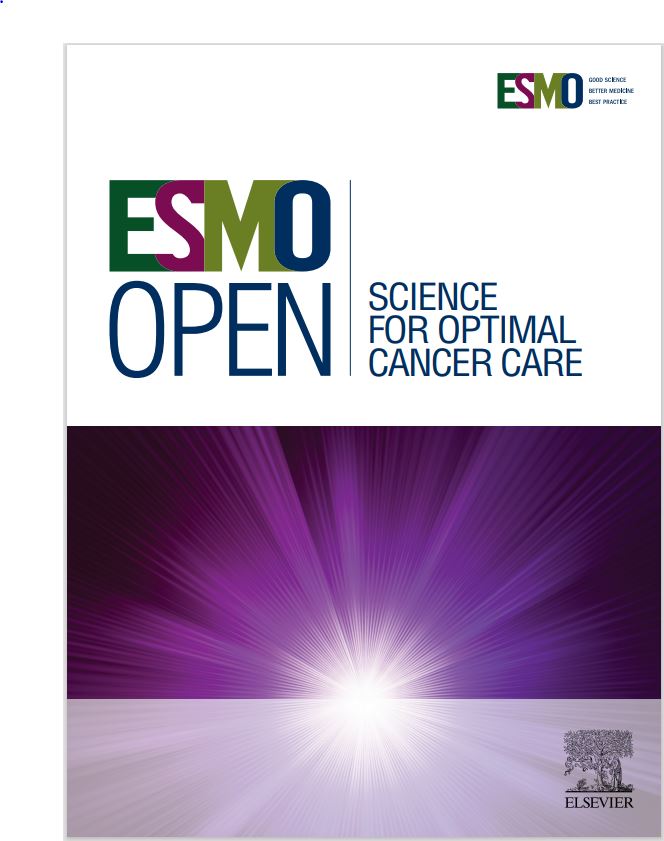High expression level of ERBB2 and efficacy of trastuzumab deruxtecan in desmoplastic small round cell tumour: a monocentric case series report
IF 7.1
2区 医学
Q1 ONCOLOGY
引用次数: 0
Abstract
Background
Desmoplastic small round cell tumours (DSRCTs) represent an ultra-rare subtype of soft tissue sarcoma characterized by a recurrent EWSR1::WT1 oncogenic translocation. Considered as an extremely aggressive cancer, the prognosis remains poor with a median overall survival not exceeding 24-36 months and a 5-year survival <10%.
Patients and methods
We analysed ERBB2/human epidermal growth factor receptor 2 (HER2) expression levels in a series of 13 DSRCT patients, using whole-exome RNA sequencing on formalin-fixed paraffin-embedded samples from a local biopathological database. In addition, a retrospective case series describes the clinical outcome of three successive DSRCT patients treated with trastuzumab deruxtecan (T-DXd).
Results
The gene expression analysis demonstrated a consistent high RNA expression level of ERBB2 in DSRCT, with elevated levels [>5 log2(transcripts per million + 1)] across all samples of the cohort and the expression level was the highest compared with all other sarcoma subtypes. In addition to these results, T-DXd showed a marked activity in all three DSRCT patients who presented with metastatic disease refractory to previous standard chemotherapy. So far, the treatment has been overall well tolerated and is currently pursued in the three patients (duration of response >3 months for all three), which warrants additional investigation.
Conclusions
This case series presents a major information, suggesting that HER2 is a therapeutic target in DSRCT and T-DXd might represent a novel therapeutic option. Those results require to be rapidly shared with the scientific community and confirmed in a prospective clinical trial in this context of very poor prognosis disease and urgent unmet need.
求助全文
约1分钟内获得全文
求助全文
来源期刊

ESMO Open
Medicine-Oncology
CiteScore
11.70
自引率
2.70%
发文量
255
审稿时长
10 weeks
期刊介绍:
ESMO Open is the online-only, open access journal of the European Society for Medical Oncology (ESMO). It is a peer-reviewed publication dedicated to sharing high-quality medical research and educational materials from various fields of oncology. The journal specifically focuses on showcasing innovative clinical and translational cancer research.
ESMO Open aims to publish a wide range of research articles covering all aspects of oncology, including experimental studies, translational research, diagnostic advancements, and therapeutic approaches. The content of the journal includes original research articles, insightful reviews, thought-provoking editorials, and correspondence. Moreover, the journal warmly welcomes the submission of phase I trials and meta-analyses. It also showcases reviews from significant ESMO conferences and meetings, as well as publishes important position statements on behalf of ESMO.
Overall, ESMO Open offers a platform for scientists, clinicians, and researchers in the field of oncology to share their valuable insights and contribute to advancing the understanding and treatment of cancer. The journal serves as a source of up-to-date information and fosters collaboration within the oncology community.
 求助内容:
求助内容: 应助结果提醒方式:
应助结果提醒方式:


